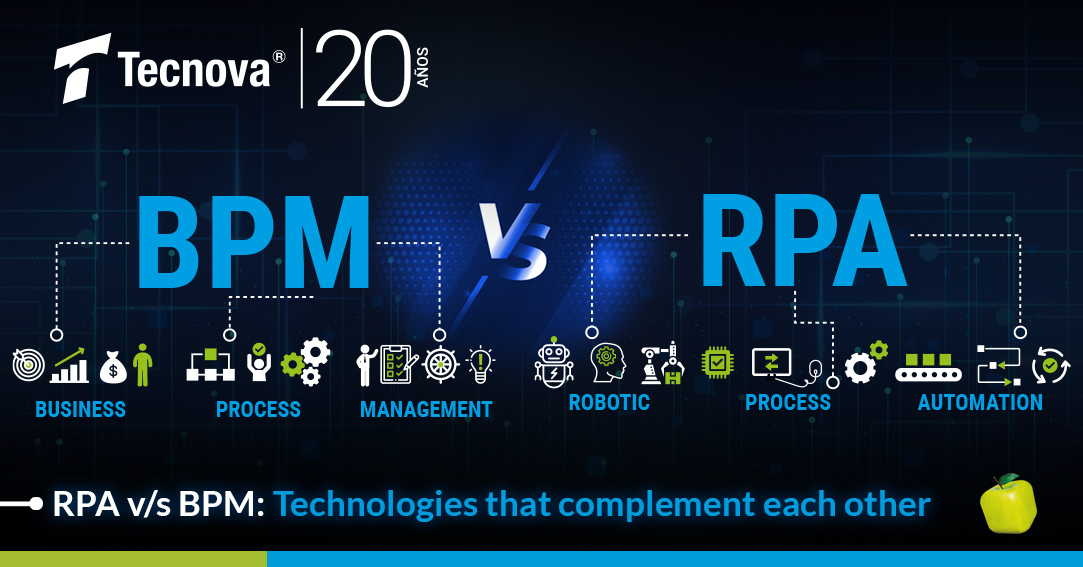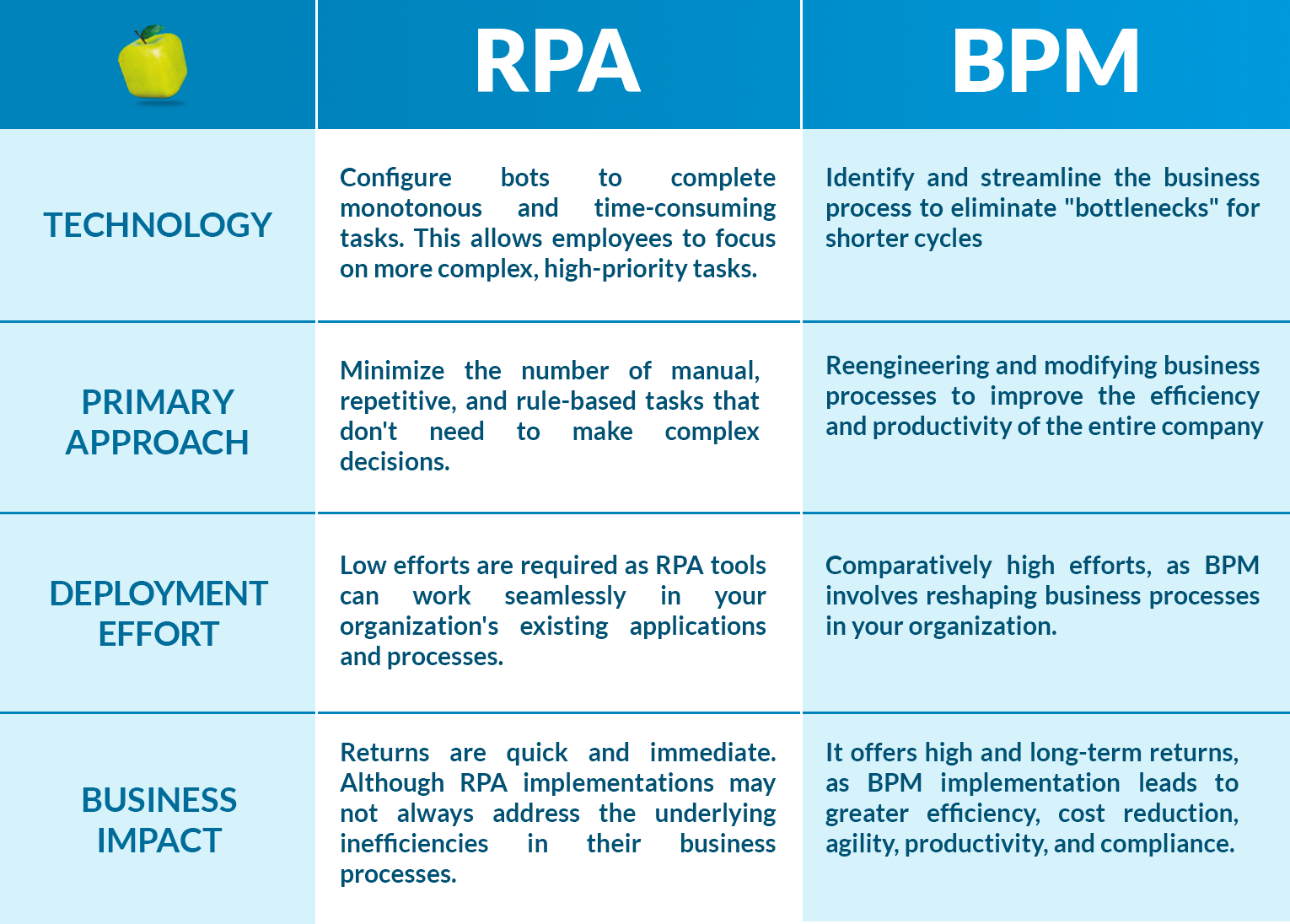RPA v/s BPM: Technologies that complement each other

For most organizations, achieving a successful digital transformation is not a short process. However, there are some useful technologies that can accelerate that desired transformation.
Business Process Management (BPM) practices have been an integral part of digital transformation strategies for many years. As companies are always looking for new technologies to optimize business processes, robotic process automation (RPA) has gained popularity as the latest automation technology. But how different is BPM?
While both RPA and BPM are different in their own ways, they also complement each other. In addition, they can help implement digital transformation across the enterprise seamlessly.
What is Robotic Process Automation (RPA)?
RPA is defined by CIO.com as “a technological application, aimed at automating business processes”. With RPA tools, a company can set up software or a ‘bot’ to process a transaction, manipulate data, trigger responses, and communicate with other digital systems.
All in all, it helps automate monotonous, routine, and time-consuming tasks. In turn, it allows the organization to focus on more important and complex business tasks. RPA is a more “superficial” solution and is not intended to optimize processes. The purpose of RPA is for processes to operate faster, replacing manual human efforts.
What is Business Process Management (BPM)?
BPM focuses on streamlining and redesigning business processes to drive greater efficiency.
According to the site bpm.com, it is defined as “a discipline involving any combination of modeling, automation, execution, control, measurement and optimization of business activity flows, in support of business objectives, encompassing systems, employees, customers and partners within and beyond business boundaries”
It is important to note that BPM is not a task management tool or a project management tool. Like RPA, it focuses on optimizing continuous, repetitive processes that follow a predictable pattern.
However, the two technologies have many highlighted differences. The following table is collected from the KissFlow site.
RPA Vs BPM:

How are BPM and RPA used?
Organizations use RPA when they have a large amount of data that lives on many systems. When processes with a large amount of data are automated, you can see the direct business impact on cost savings, efficiency, and risks. RPA can only be used for routine tasks that do not involve any complex reasoning or decision-making.
Compared to RPA, BPM is used to automate entire end-to-end processes. It can be done by:
- Identify all administrative tasks required for the process.
- Outline of complete workflows
- Analyzing areas where workflows can be optimized
- Modify workflows to make them more effective.
According to Byte magazine, companies can use the combination of BPM and RPA to manage end-to-end process automation in their digital transformation initiatives. BPM is responsible for process orchestration, customer interactions, exception management, and complex decision-making by humans.
RPA oversees repetitive sequences of tasks that can be fully delegated to a virtual “digital workforce” of software robots.
Conclusion: how to choose the right one?
Having a clear understanding of RPA and BPM can definitely help you decide the right technology for your automation project.
You should choose RPA when you need to automate processes that are not going to change frequently and that do not require any integration. BPM should be used for processes that are primarily executed by humans or that require third-party integration.
When deployed together, RPA and BPM can help you build a powerful platform that can support digital transformation across your organization.








